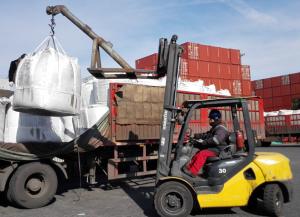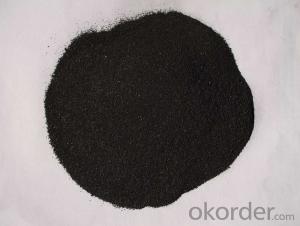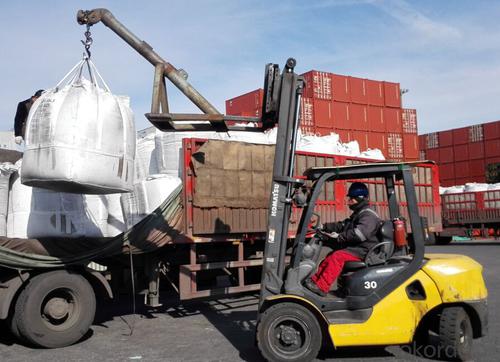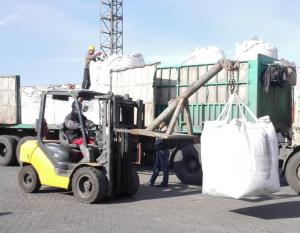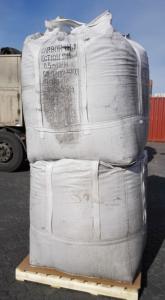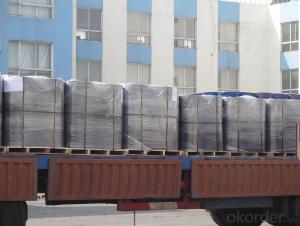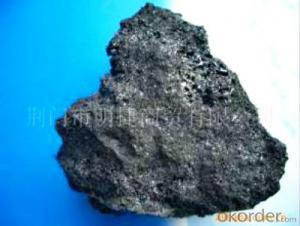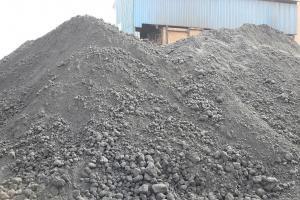Calcined Petroleum Coke FC98% from CNBM China
- Loading Port:
- Tianjin
- Payment Terms:
- TT or LC
- Min Order Qty:
- 20 m.t.
- Supply Capability:
- 1500 m.t./month
OKorder Service Pledge
OKorder Financial Service
You Might Also Like
Quick Details
Place of Origin: China (Mainland)
Application: carben additives
Dimensions: fix carben morethan98%,sulphur less5%
Chemical Composition: nature graphite powder
attribute: briquette grade
shape: <SPAN style="BORDER-BOTTOM: 0px; BORDER-LEFT: 0px; PADDING-BOTTOM: 0px; MARGIN: 0px; PADDING-LEFT: 0px; PADDING-RIGHT: 0px; FONT-FAMILY: inherit; WORD-WRAP: break-word; VERTICAL-ALIGN: baseline; BORDER-TOP: 0px; BORDER-RIGHT: 0px; PADDING-TOP: 0px" class=attr-value title=block/powder>block/powder
classify: carbon additives/petroleum coke
Packaging & Delivery
| Packaging Details: | 50kg/bag,25kg/bag or as customer requirement |
|---|---|
| Delivery Detail: | 20DAYS after payment |
Specifications
Calcined Petroleum Coke FC98% from CNBM China
Petroleum coke products can be divided into needle coke, sponge coke, projectile coke and coke breeze four kinds.
Calcined Petroleum Coke
F.C.: 98.5%MIN
ASH: 0.8% MAX
V.M.: 0.7%MAX
S:0.5%MAX
Moisture: 0.5%MAX
Structure
Calcined Petroleum Coke FC98% from CNBM China
Shape: granule
- Dimensions: 0-1mm, 1-5mm, 1-6mm, 2-8mm, etc
- Product Type: Carbon Additive
- C Content (%): 98-99.5% MIN
- Working Temperature: -
- S Content (%): 0.5%-0.7%MAX
- Ash Content (%): 0.7%MAX
- Volatile:0.8%MAX
- Moisture: 0.5% MAX
- ADVANTAGE: low ash & sulfur
- COLOR: Black
Feature
Calcined Petroleum Coke FC98% from CNBM China
Physics and chemistry performance:
Unit | Index | |||||
No.1 | No.2 | No.3 |
| |||
Density | g/cm3 | 2.04 | 2.00 | 2.00 | ||
sulphur content | %≤ | 0.5 | 1.0 | 2.5 | ||
volatility | %≤ | 0.5 | 0.5 | 0.5 | ||
ash content | %≤ | 0.5 | 0.5 | 0.5 | ||
moisture | %≤ | 0.3 | 0.5 | 0.5 | ||
charcoal | %≤ | 98.5 | 98.0 | 98.0 | ||
Image
Calcined Petroleum Coke FC98% from CNBM China
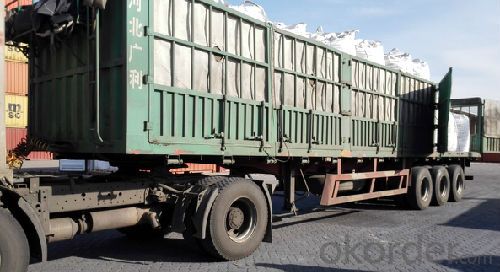
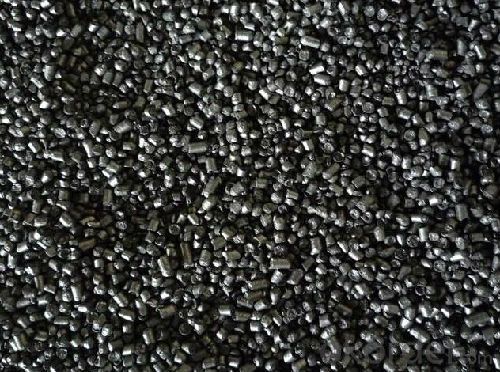
FAQ:
Calcined Petroleum Coke FC98% from CNBM China
How to classify calcined petroleum coke?
1) According to difference of sulfur content, can be divided into high sulfur coke (sulfur content more than 4%), sulphur in coke sulfur content (2% 4%) and low sulfur coke (sulfur content below 2%).
2) Petroleum coke products can be divided into needle coke, sponge coke, projectile coke and coke breeze four kinds:
3) Needle coke, has obvious needle-like structure and fiber texture, mainly used for steel-making in high power and ultra-high power graphite electrode. As a result of needle coke in sulfur content, ash content, volatile matter and true density and so on have strict quality requirements, so the production process of needle coke and raw materials have special requirements.
4) The sponge coke, high chemical reactivity, low content of impurities, mainly used in the aluminum industry and carbon industry.
5) Focal or spherical coke: the projectile shape is round, diameter 0.6-30 mm, usually from the production of high sulphur, high asphaltic residual oil, can only be used as industrial fuel power generation, cement etc.
6) Coke breeze: fluidized coking process, the fine particles (0.1- 0.4 mm) in diameter, high volatile, high expansion coefficient, cannot be directly used for electrode preparation and carbon industry.
Advantage:
Calcined Petroleum Coke FC98% from CNBM China
1. High quality and competitive price.
2. Timely delivery.
3. If any item you like. Please contact us.
Your sincere inquiries are typically answered within 24 hours.
- Q: Does alumina react with carbon?
- NotThe smelting of Al in industry can only be done by electrolysis. Even at high temperatures, the reducibility of C is not as strong as Al, and the melting point of Al2O3 is very high. At this temperature, C has been gasified
- Q: How does carbon dioxide affect fuel efficiency?
- Carbon dioxide does not directly affect fuel efficiency. However, the burning of fossil fuels, which releases carbon dioxide, contributes to global warming and climate change. These environmental impacts can lead to stricter regulations on fuel efficiency and encourage the development of more efficient and cleaner energy sources.
- Q: Joint carbide gas incident
- After a lapse of 25 years, a India District Court on 1984 Bhopal gas leak to be long in coming judgment, Union Carbide (India) Co., Ltd. 7 India nationals day was held for negligence causing death, they will face up to two years in prison. On the same day, hundreds of survivors, family members and environmentalists gathered around the courthouse to protest the court's decision that the perpetrators of the worst industrial disaster in twentieth Century were too light and too late. In 1969, Union Carbine Co established a Union Carbide in central India state of Bhopal Beijiao city (India) Co. Ltd., specializing in the production of aldicarb, carbaryl pesticide drops. The chemicals used in these products is called a methyl isocyanate poisonous gas. The early morning of December 3, 1984, this factory storage explosive liquid methyl isocyanate the steel tank, 45 tons of poison gas leak quickly, directly killed more than 1.5 people, allegedly have caused more than 550 thousand people died and chemical poisoning related lung cancer, renal failure and liver disease.
- Q: What is the symbol for carbon?
- The symbol for carbon is C.
- Q: How does carbon affect the pH of rainwater?
- Carbon dioxide (CO2) in the atmosphere can dissolve in rainwater to form carbonic acid (H2CO3), which lowers the pH of rainwater, making it more acidic.
- Q: What is carbon footprint labeling?
- Carbon footprint labeling is a system that provides information about the amount of greenhouse gas emissions produced during the manufacturing, transportation, and use of a product. It aims to inform consumers about the environmental impact of their purchases, allowing them to make more sustainable choices and reduce their carbon footprint.
- Q: What is the most common isotope of carbon?
- The most common isotope of carbon is carbon-12.
- Q: How is carbon used in the production of fertilizers?
- Carbon is an essential component in the production of fertilizers. It is used in various forms such as organic matter, carbon dioxide, and carbonates. These carbon sources are utilized to enhance soil fertility, improve plant growth, and increase crop yield. Organic matter, such as compost, manure, and crop residues, contains carbon in the form of decomposed plant and animal materials. When added to the soil, these organic sources of carbon provide essential nutrients, including nitrogen, phosphorus, and potassium, to plants. They also improve soil structure, water holding capacity, and microbial activity, which are crucial for plant growth. Carbon dioxide (CO2) is another important carbon source used in the production of fertilizers. CO2 is captured from industrial emissions and incorporated into the production process. It is converted into various chemical compounds, such as urea and ammonium bicarbonate, which are widely used as nitrogen fertilizers. These fertilizers release nitrogen slowly, ensuring a steady supply of nutrients to the plants over an extended period of time. Additionally, carbonates, such as calcium carbonate, are used as neutralizing agents in fertilizers. They help to balance the pH levels of acidic soils, making them more favorable for plant growth. Carbonates also provide a source of calcium, an essential nutrient for plants, further enhancing their growth and development. In summary, carbon plays a crucial role in the production of fertilizers by providing essential nutrients, improving soil fertility, and enhancing plant growth. Whether in the form of organic matter, carbon dioxide, or carbonates, carbon is a vital component that contributes to the success of modern agriculture.
- Q: What are the impacts of carbon emissions on the stability of kelp forests?
- Carbon emissions have significant impacts on the stability of kelp forests. Increased carbon dioxide levels in the atmosphere lead to ocean acidification, which negatively affects the growth and survival of kelp. Acidic conditions hinder the ability of kelp to absorb essential nutrients, weaken their structure, and make them more susceptible to damage from storms and other disturbances. Additionally, rising ocean temperatures associated with carbon emissions can lead to the expansion of harmful algal blooms that compete with kelp for light and nutrients. These combined effects pose a threat to the stability and biodiversity of kelp forests, with potential cascading impacts on the marine ecosystem.
- Q: How does carbon dioxide affect the pH of seawater?
- Carbon dioxide reacts with seawater to form carbonic acid, which lowers the pH of the water, making it more acidic. This process is known as ocean acidification and has significant impacts on marine life and ecosystems.
Send your message to us
Calcined Petroleum Coke FC98% from CNBM China
- Loading Port:
- Tianjin
- Payment Terms:
- TT or LC
- Min Order Qty:
- 20 m.t.
- Supply Capability:
- 1500 m.t./month
OKorder Service Pledge
OKorder Financial Service
Similar products
Hot products
Hot Searches
Related keywords
